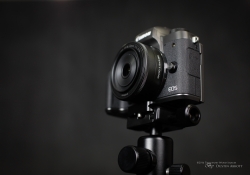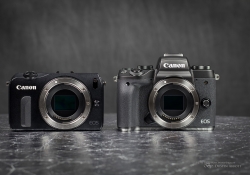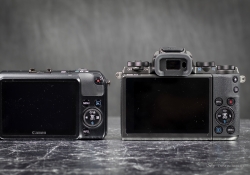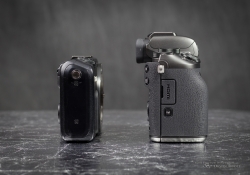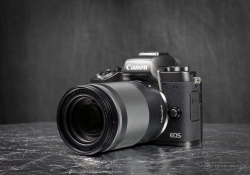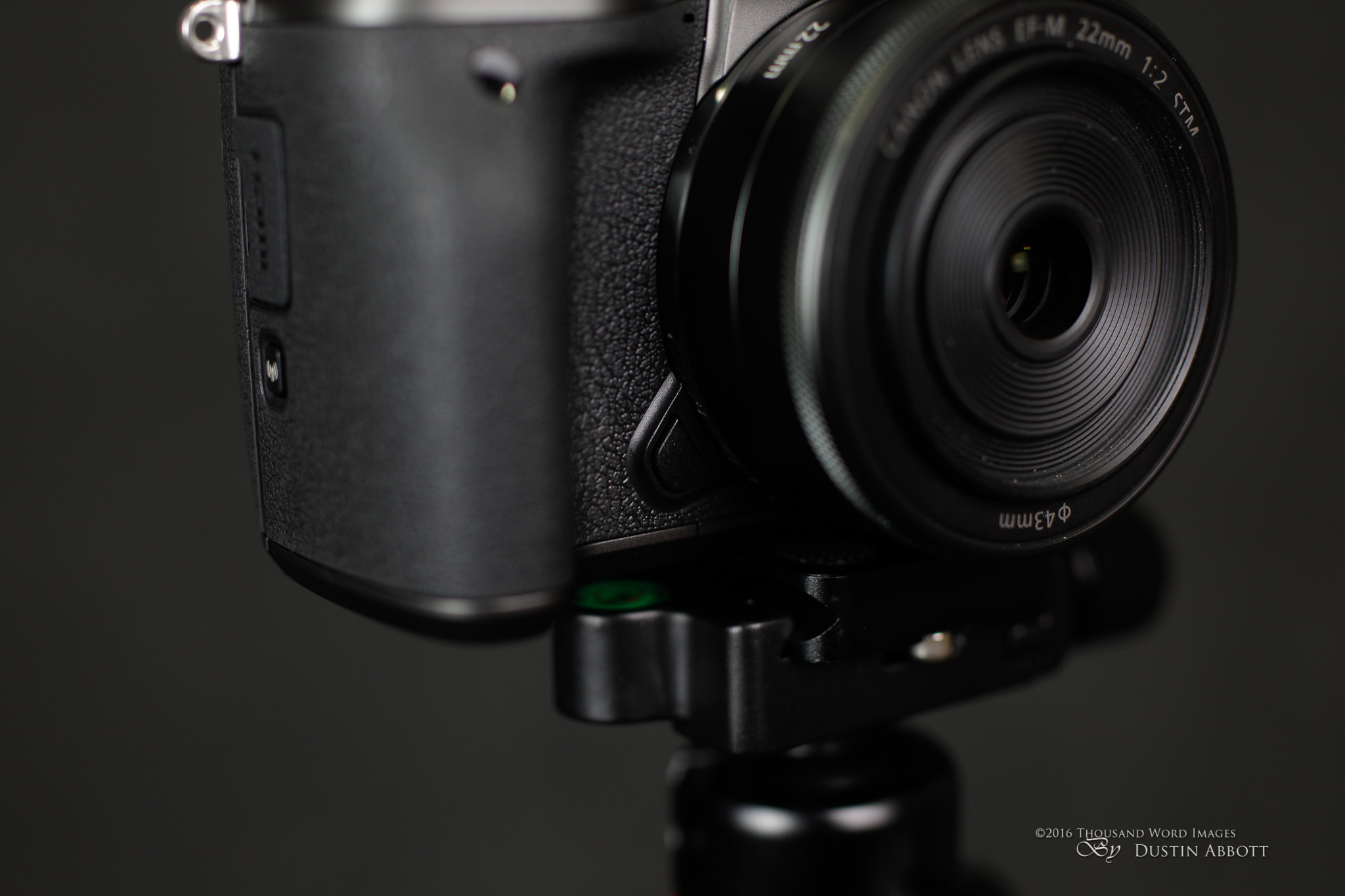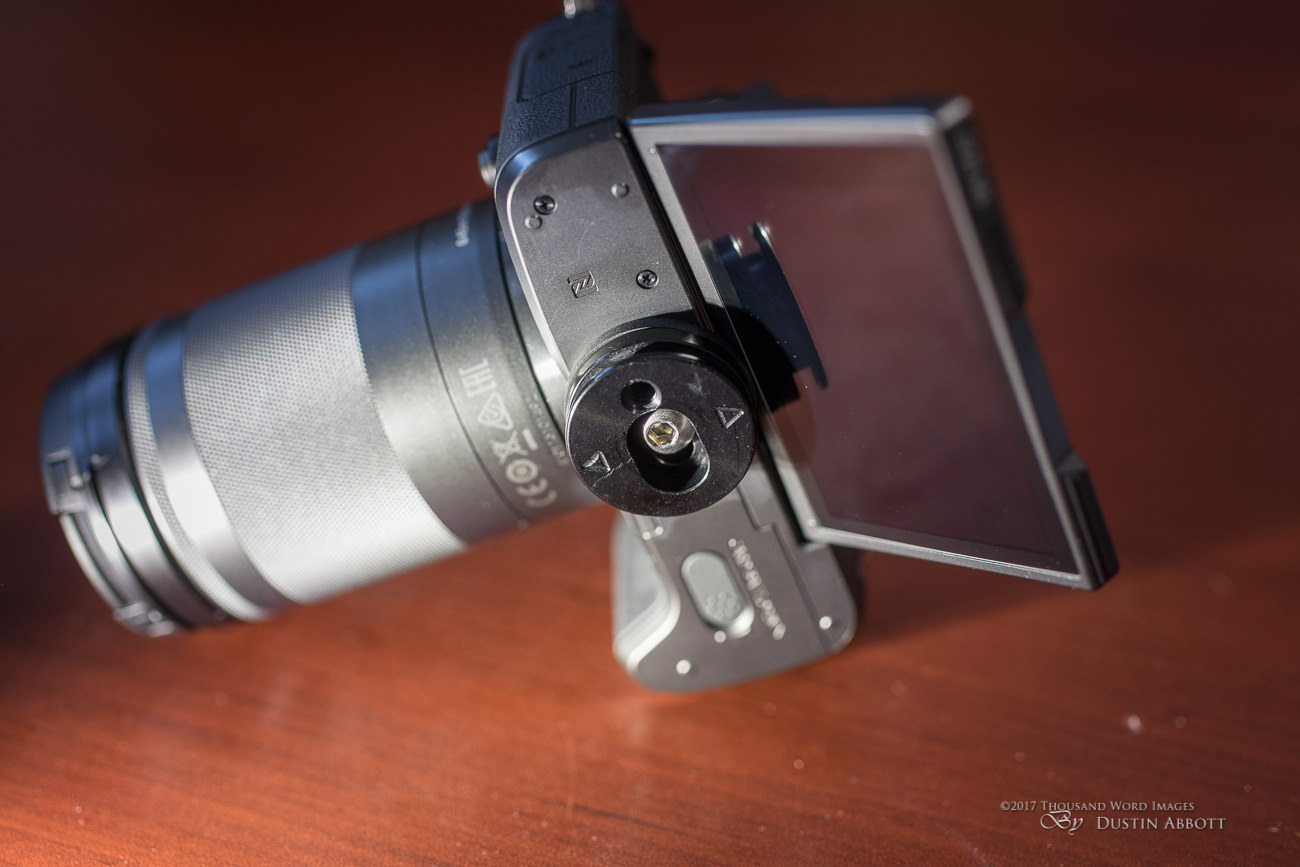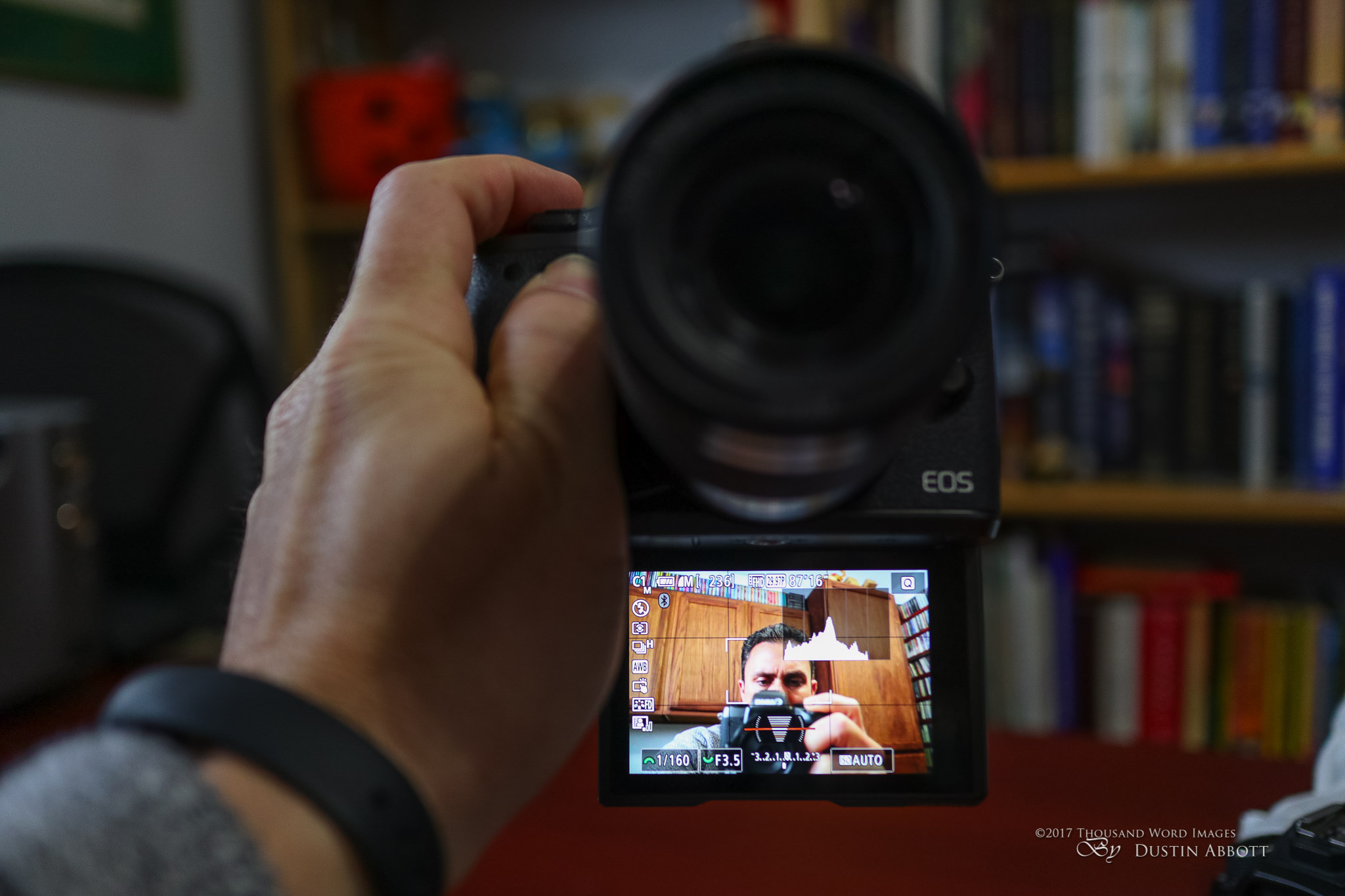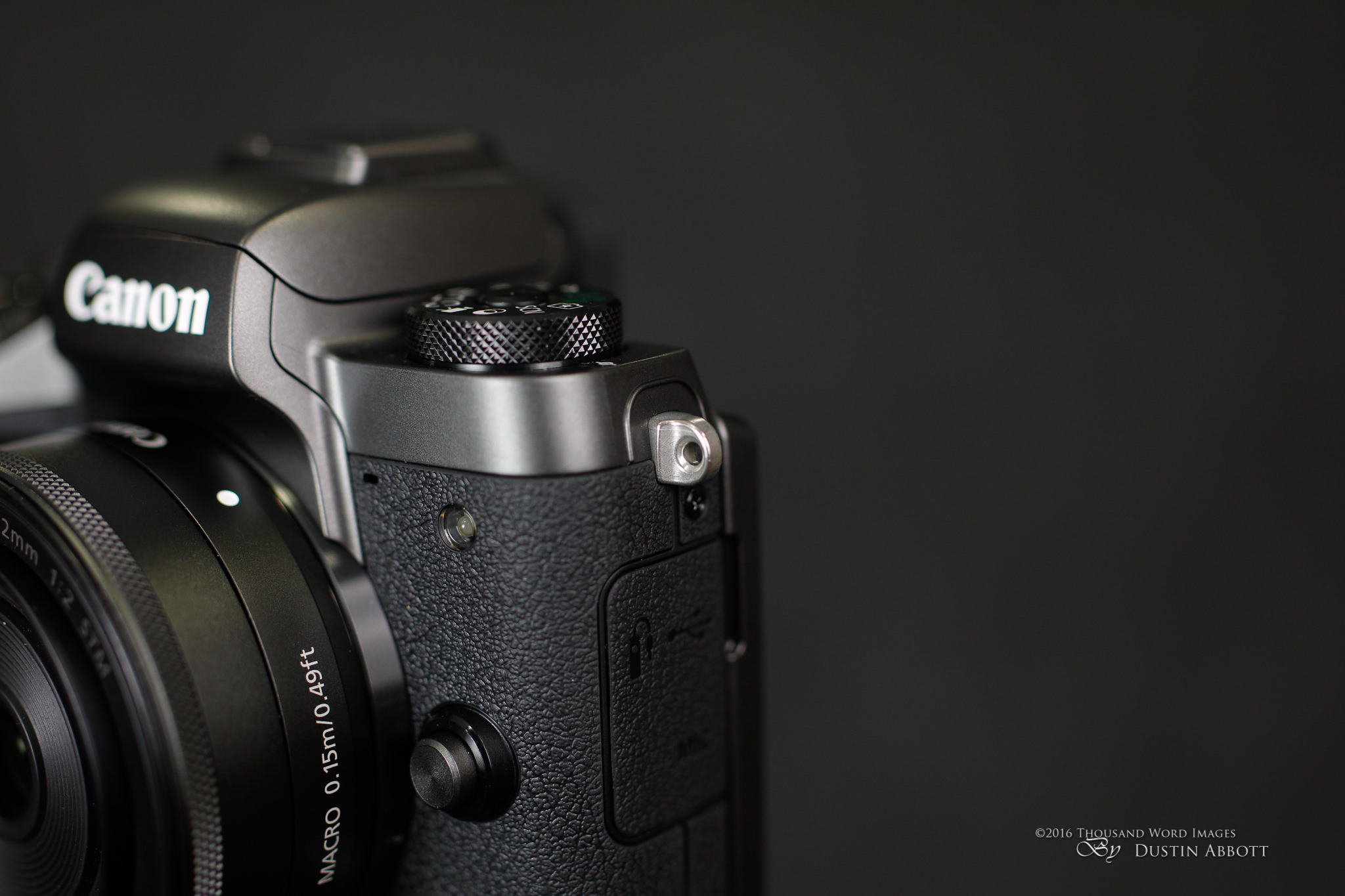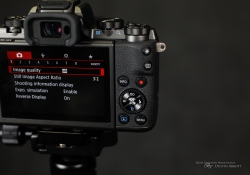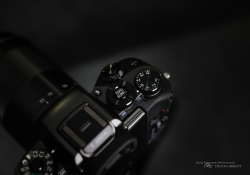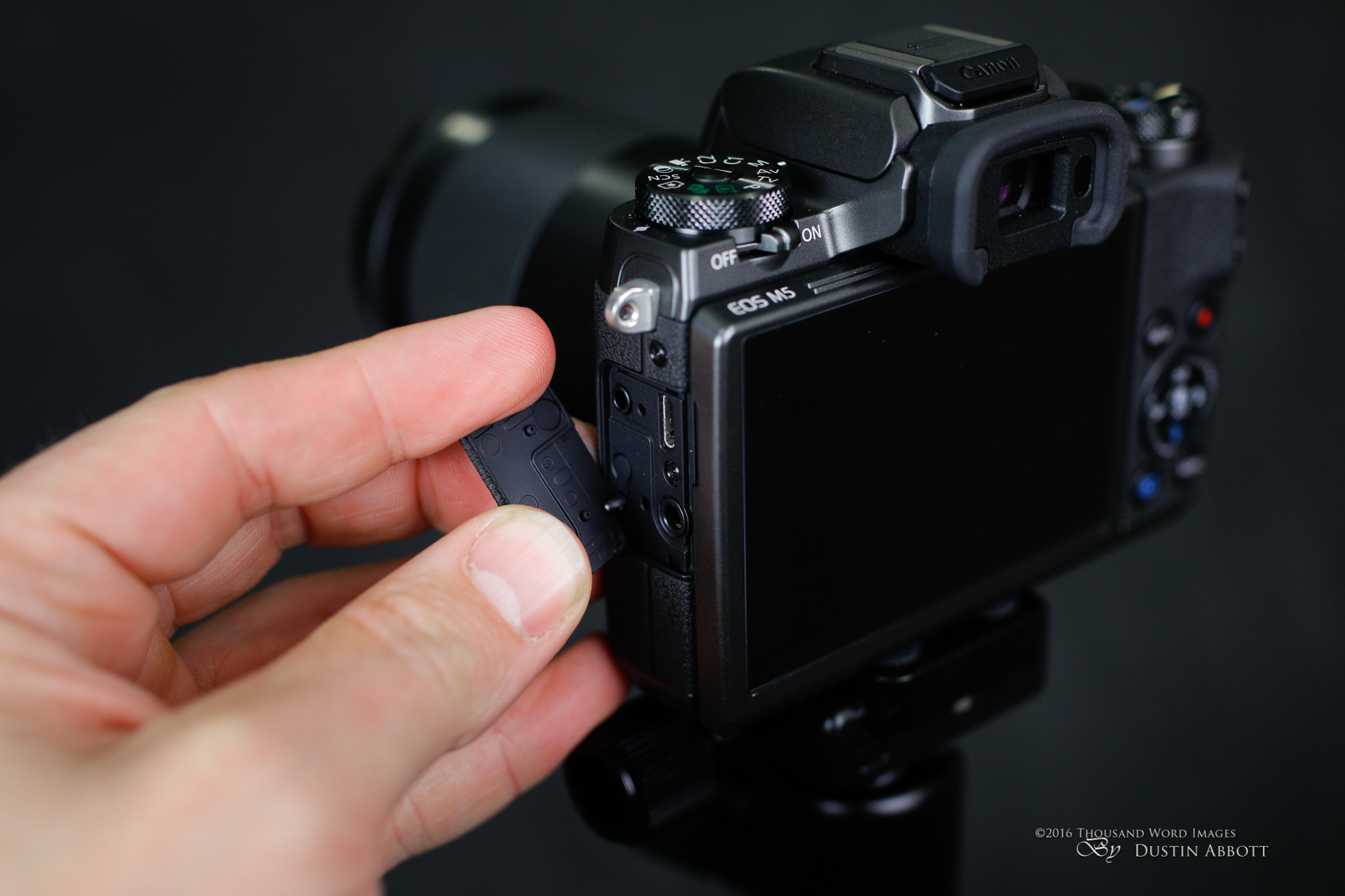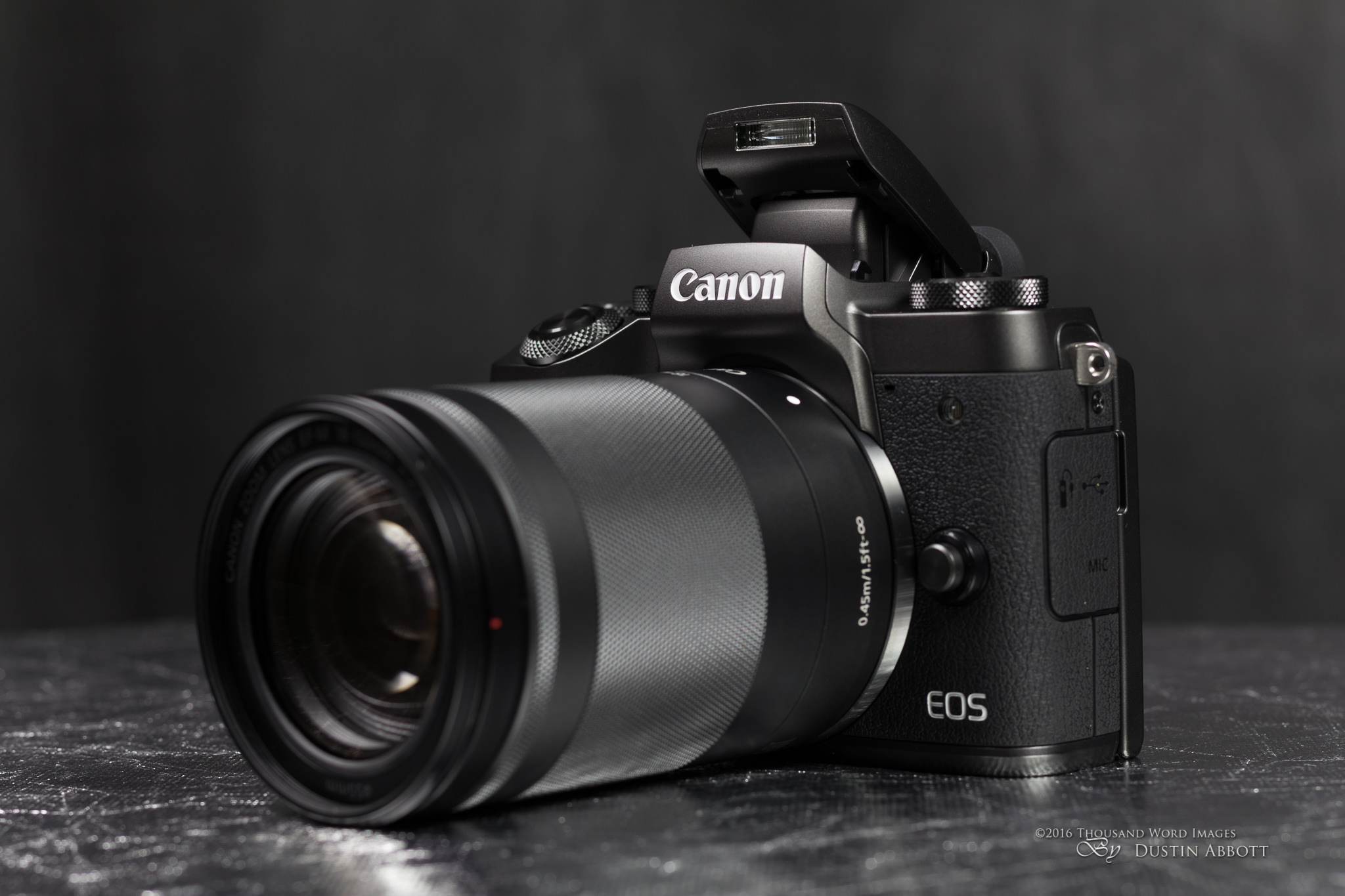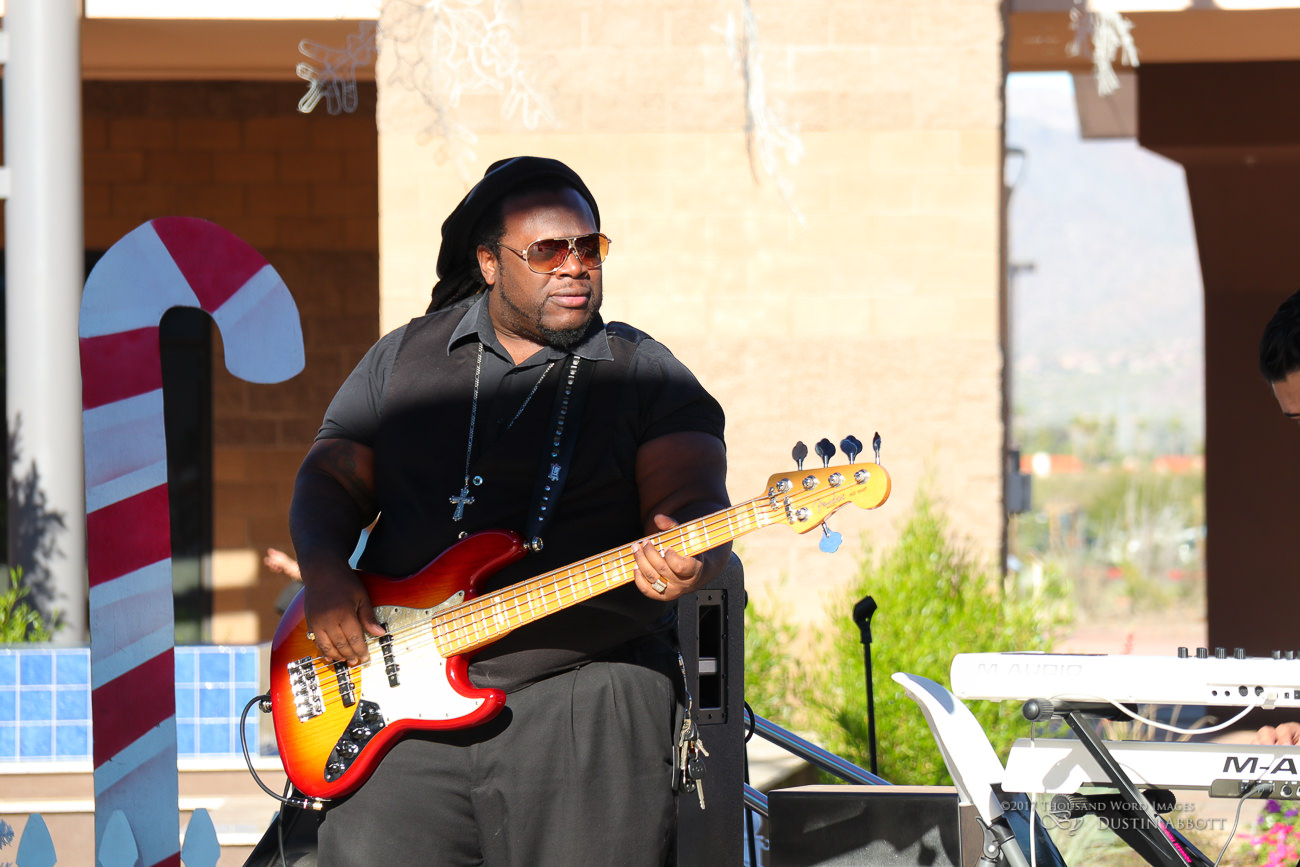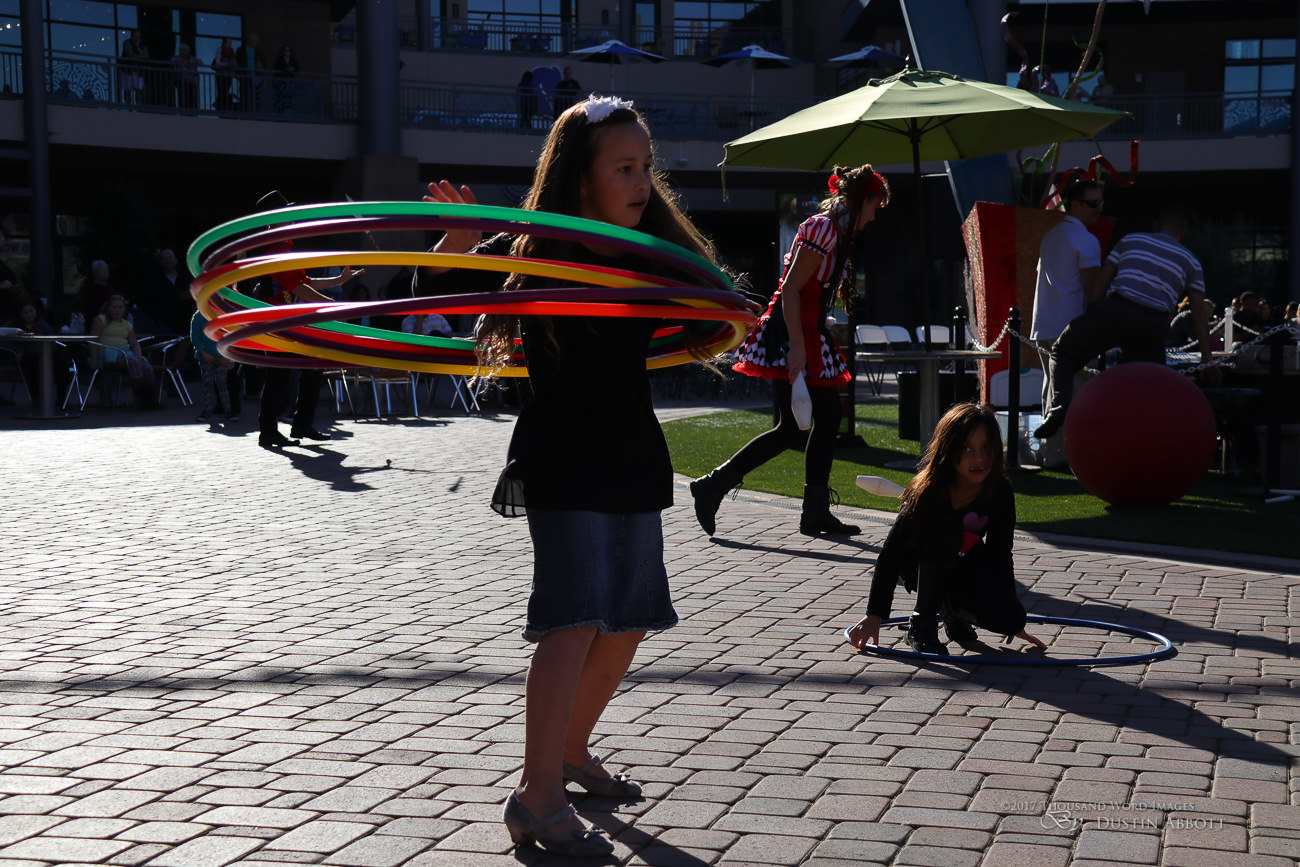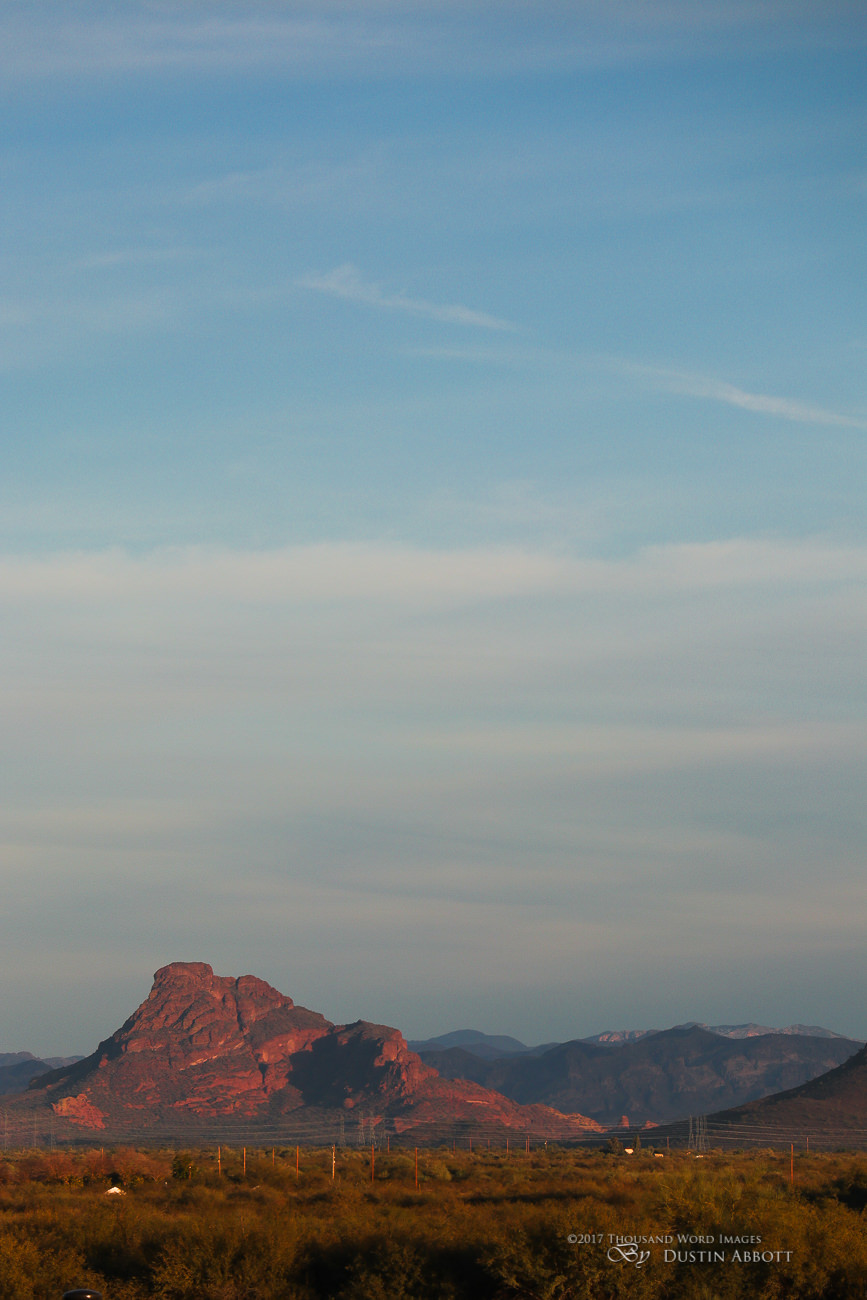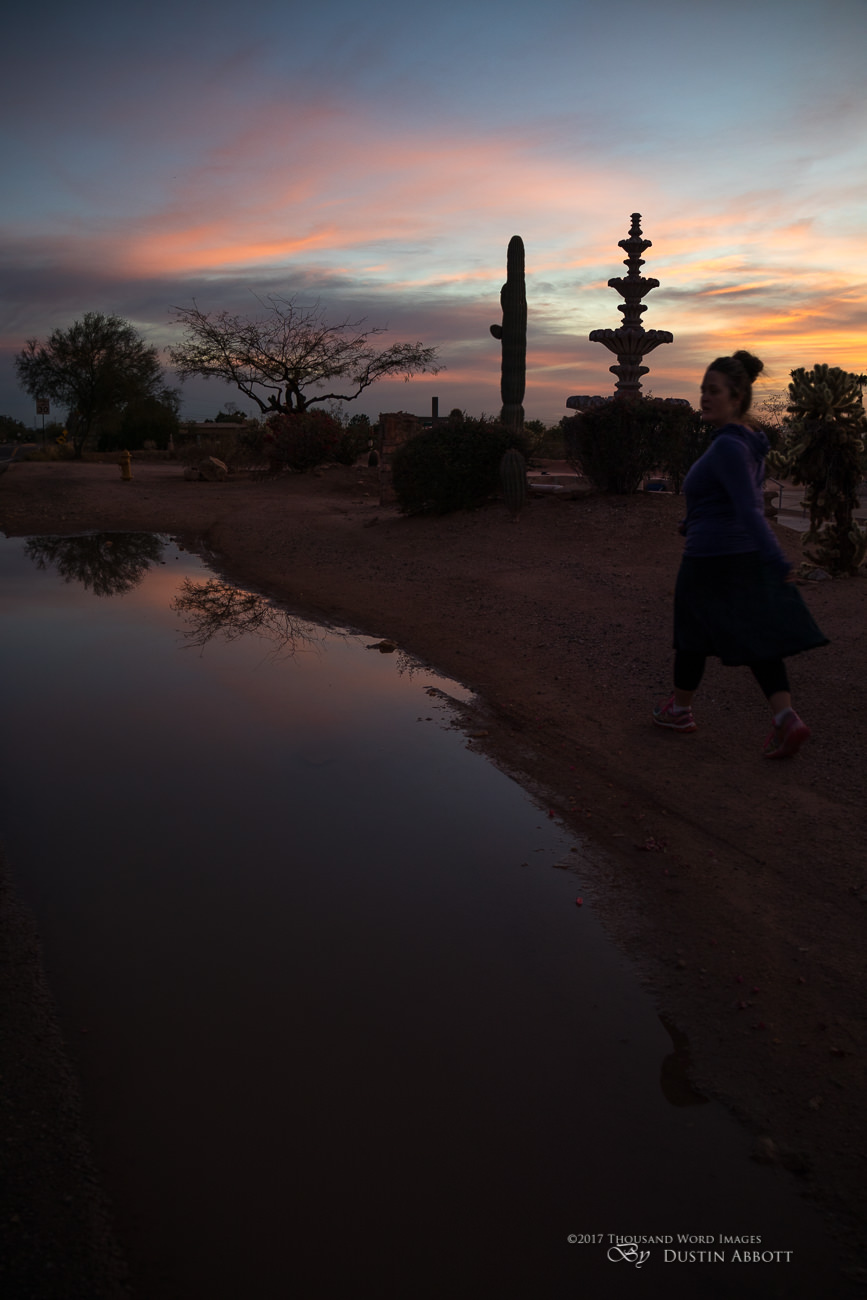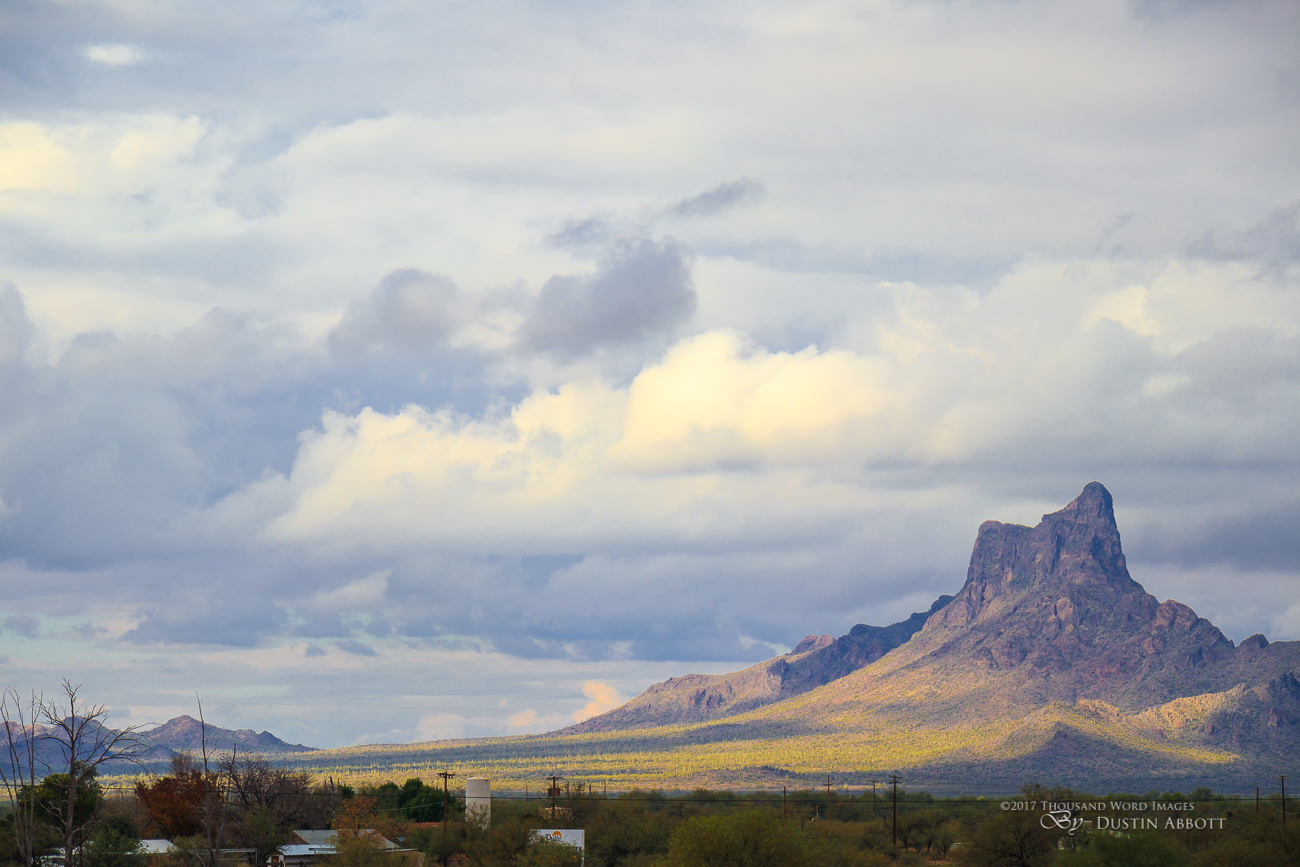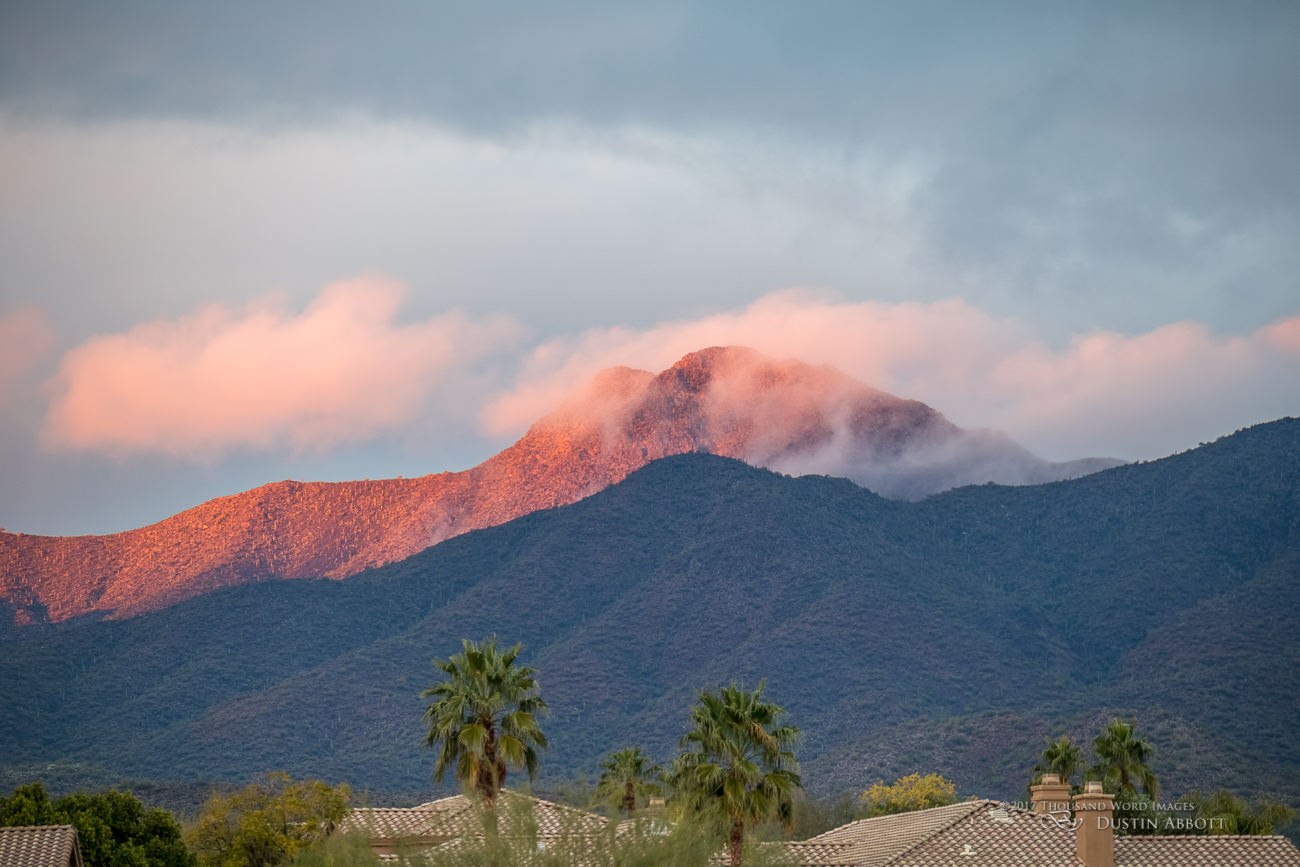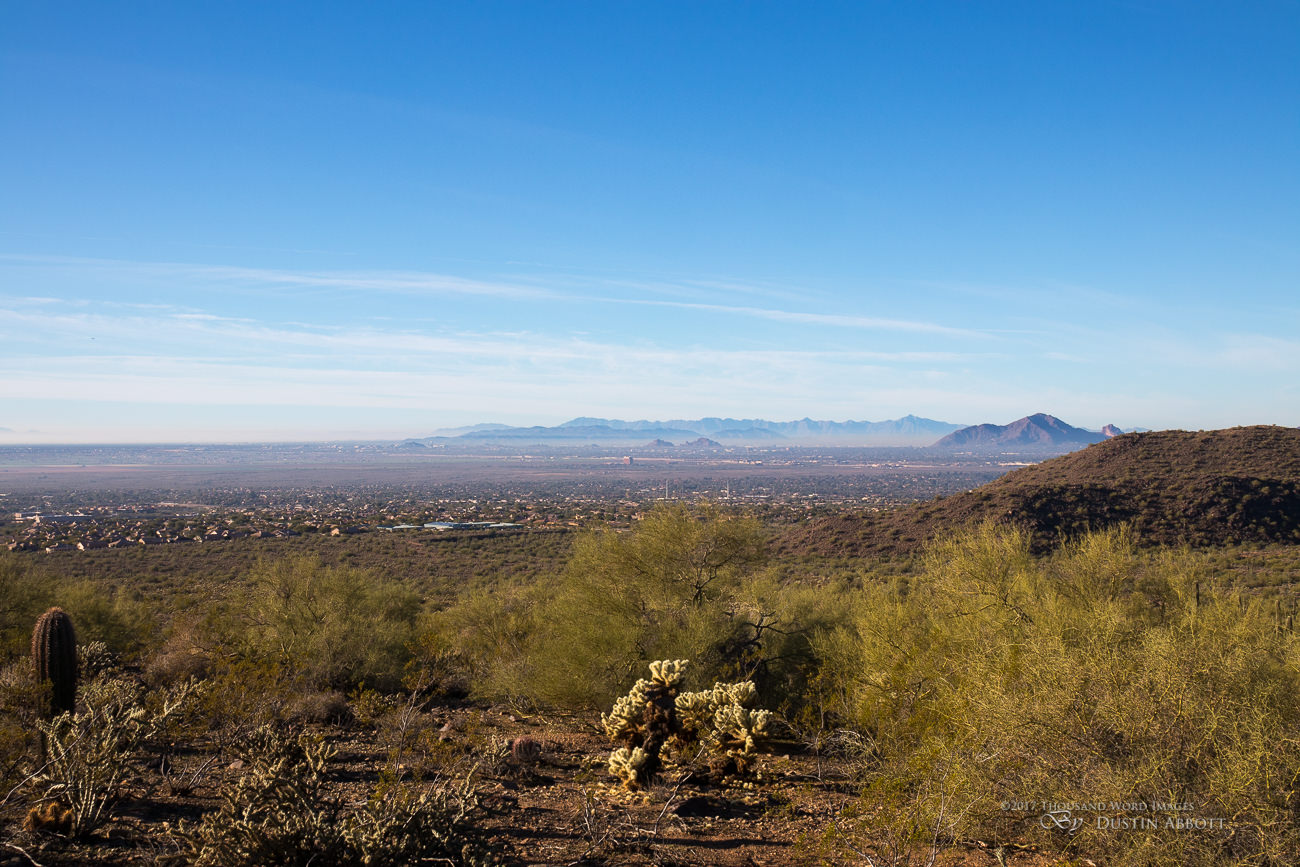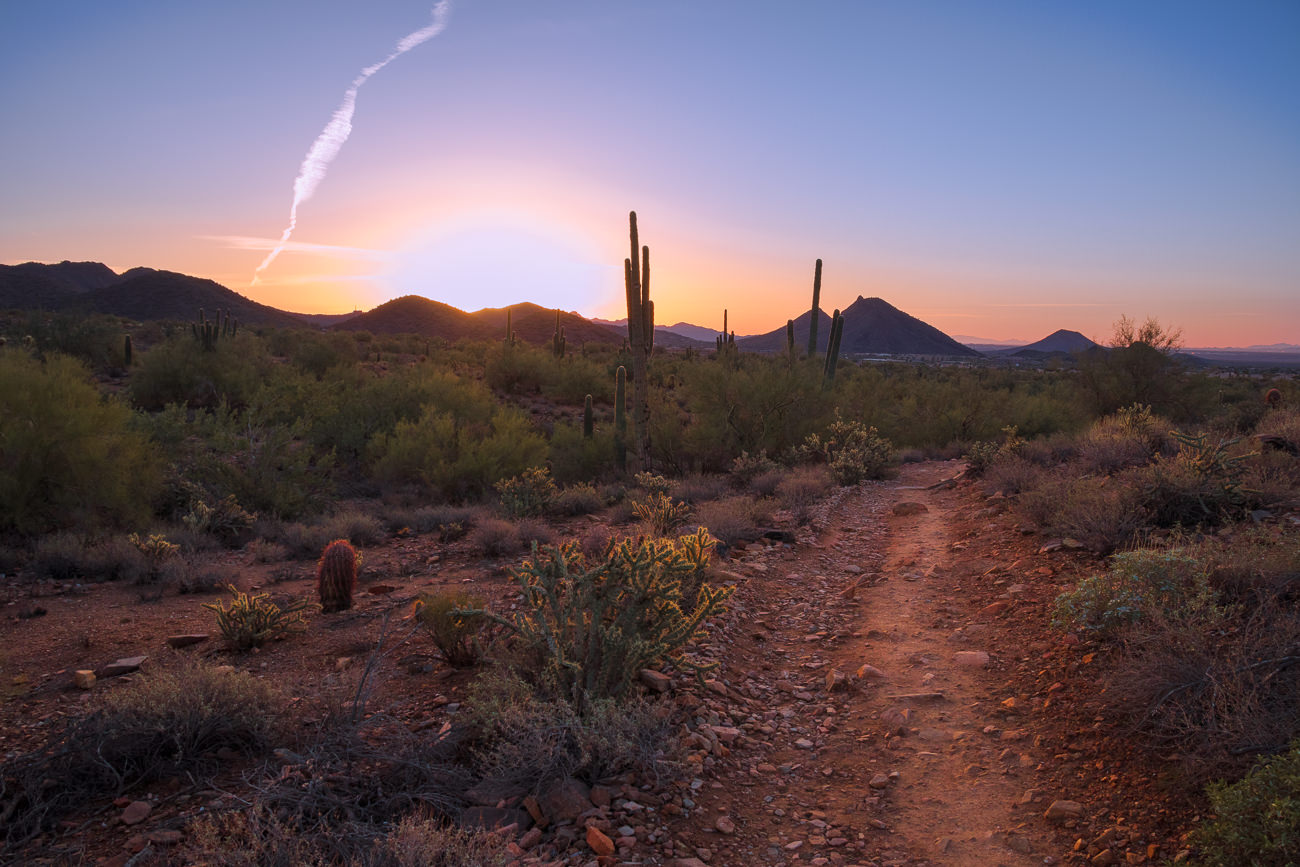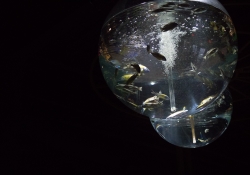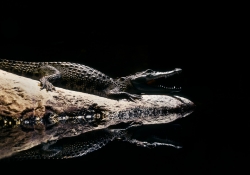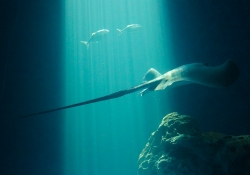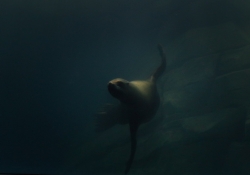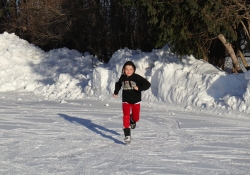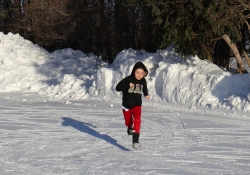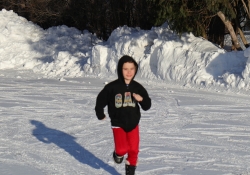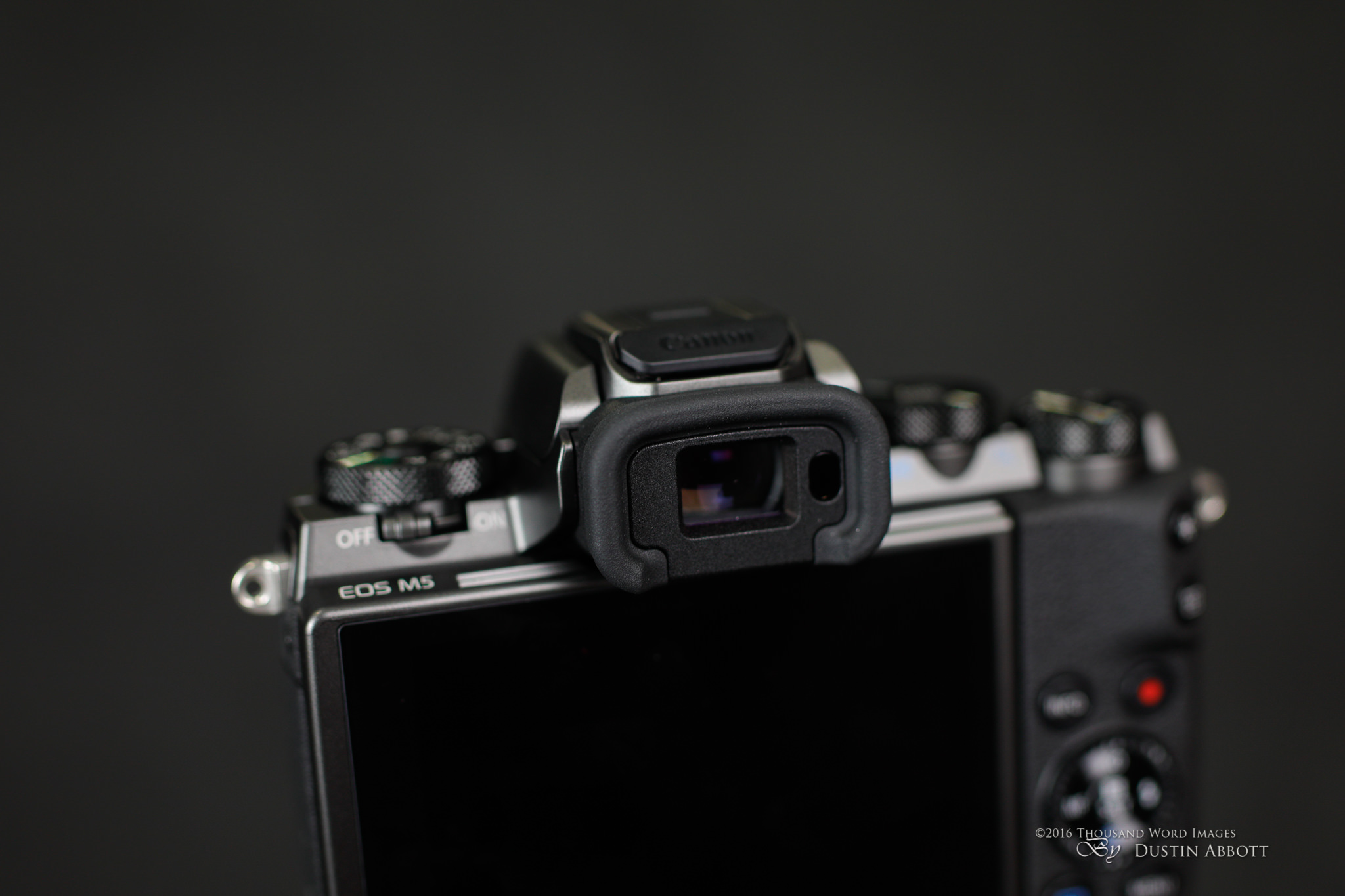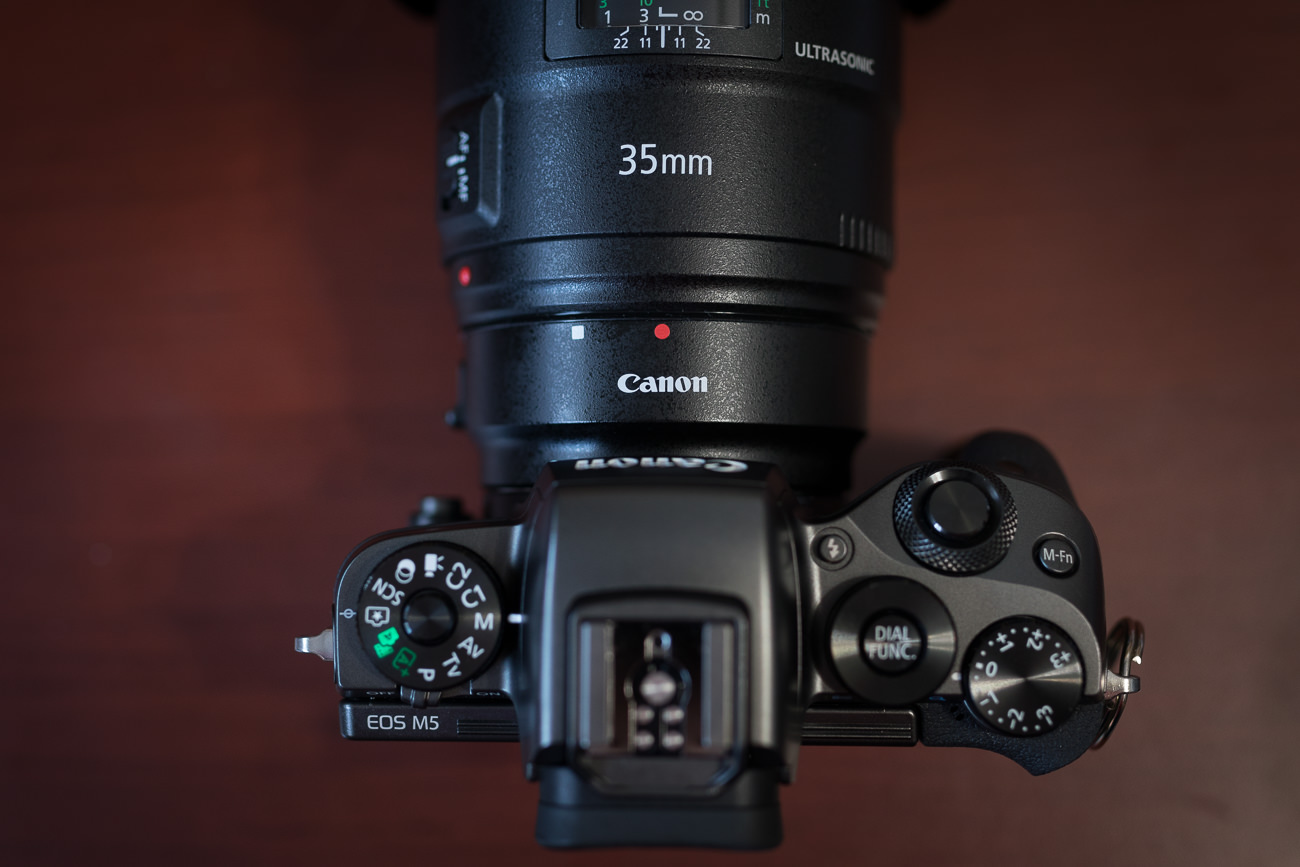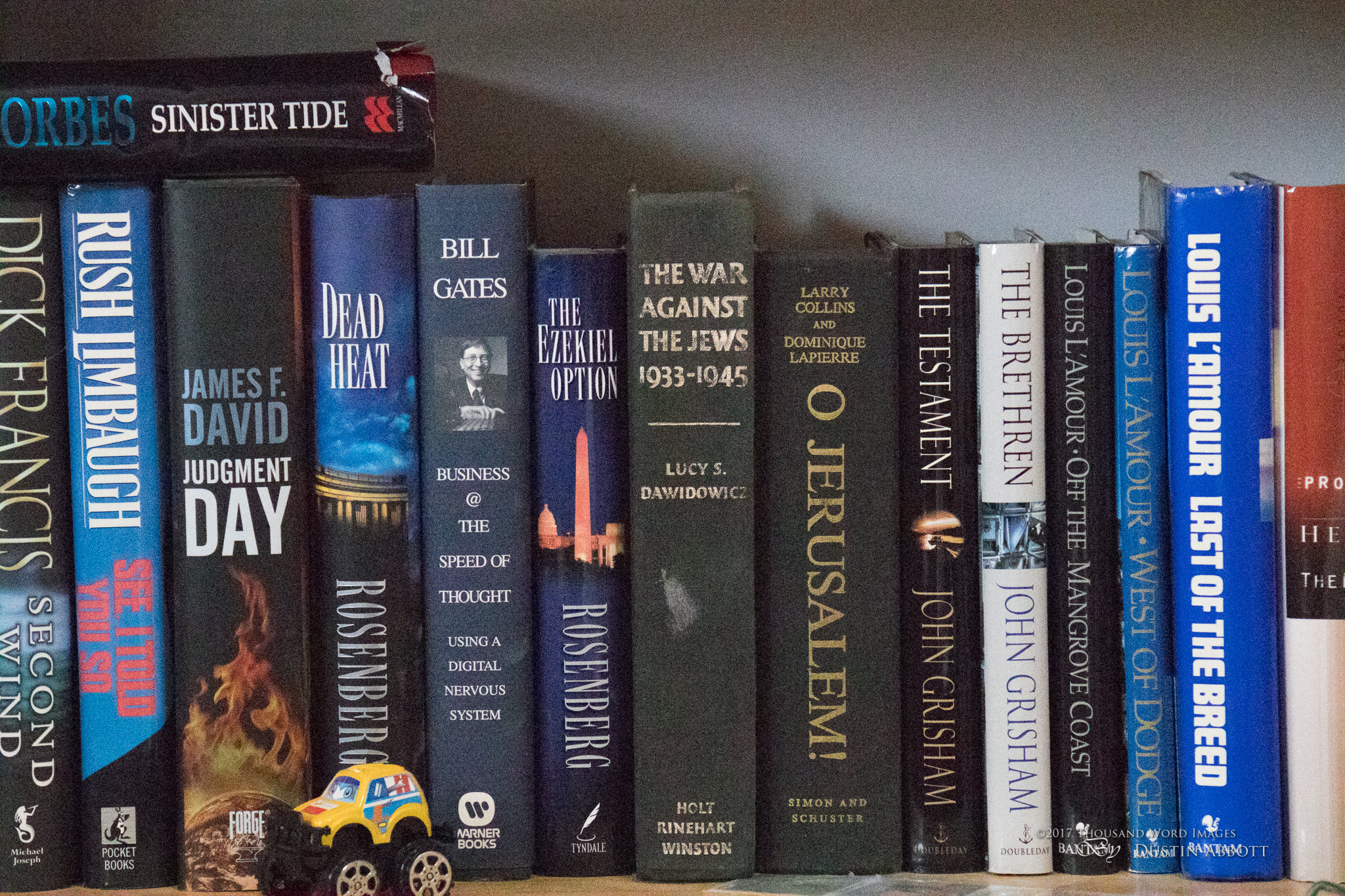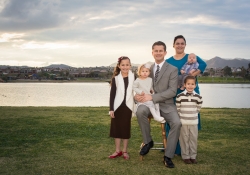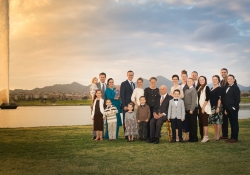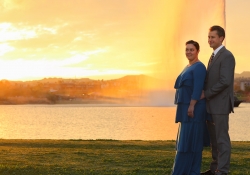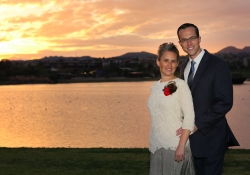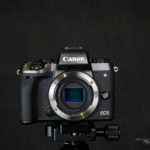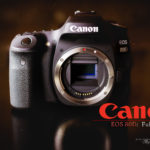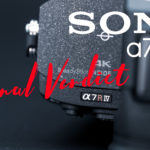Canon’s venture into mirrorless has had mixed success. The EOS M cameras have largely been critical flops despite having some unique strengths largely due to arriving with limited feature sets when compared to the competition. Canon has also really lagged in the key areas of autofocus, burst rate, and buffer size, reducing their mirrorless cameras (including the M3) to cameras suited for capturing only fairly slow subjects. Despite this Canon has managed to capture a pretty significant portion of the mirrorless market due to brand recognition, great image quality, and the ability to use EF lenses via adapter. In North America, however, a good percentage of M series sales have come due to highly discounted prices. But the EOS M5 arrives as a much more fully realized camera and is touted as essentially a Canon 80D (an excellent camera – read my review here!) in a mirrorless body. Is the Canon EOS M5 a true DSLR replacement? Read on to find out…
Prefer to watch your reviews? I’ve got you covered – just click on the video below!
I reviewed two EOS M5 bodies by using them exclusively on an extended trip to the state of Arizona, where I used them backpacking, for portraits, for some shots of animals and fish at a new aquarium, to shoot several religious events, and to record my family’s holiday celebration. I used them in a wide variety of real world shooting situations, and I feel that I can render an accurate verdict on the strengths and weaknesses of the new M5.
Build and Specifications
The video below gives you a very in depth overview of the physical design and characteristics of the M5. It’s worth watching.
One area that some original M users will lament is that while there was a trend towards smaller and lighter in the M/M2 bodies, the trend reversed with the M3 and has gone a step further here. The original EOS M weighed a negligible 262g and was easily pocketable with the EF-M 22mm f/2 lens attached. The M3 moved up to 366g (12.91oz). The M5 has taken yet another jump, and now weighs 428g (15.1oz). It’s still light in the big scheme of things, but it is worth noting the M series has gained about 40% in weight since its inception.
The camera is physically larger than the M3, too. The M3 was 110.9 x 68 x 44.4mm (WxHxD), or 4.4 x 2.7 x 1.7”. The M5 moves to 116.8 x 88.9 x 61mm (4.6 x 3.5 2.4”). Still, having used all three cameras (M, M3, M5), the M5 is by far my favorite to hold and use. It has put on just enough real estate to be a genuinely nice camera to use ergonomically. And, to be fair, the M5 has added an integrated EVF. The camera is arguably more compact now than the EOS M3 with the DC-1 EVF attached to it. And, when compared to the M1, the series has gained the EVF and a built-in flash along with a much larger, tilting LCD. The first EOS M was somewhat of an ergonomic disaster. It completely relied on the touchscreen for almost all control over the camera. The EOS M5 has matured into a fully functional camera with ergonomics that nearly rival that of any DSLR.
The grip on the M was little more than a nub, meaning that you squeezed the camera more than gripping it. The M3 was a big step in the right direction, but the M5 feels great in my hands. It feels like a real camera. A small one, yes, but big enough (and contoured enough) to actually fit my hands and feel useful.
The touchscreen LCD has grown in both size and resolution. It is a now a 3.2” screen with 1.62 million pixel resolution, resulting in a crisper, easier to see display. This screen also features a tilting design (85° up, 180° down) to better enable working from high and low angles. The built-in EVF means that the fully forward facing position of the screen is now underneath the camera rather than on the top, which results in a pretty serious ergonomic issue. If you have the camera on a tripod or selfie stick you might be physically blocked from tilting it to the forward facing position or have an issue where a good part of the screen is obscured. I find that just about all of my quick release plates (and even the mounting hub for my Cotton Carrier carry systems) will block the screen from fully tilting down.
In ordinary use I find the screen gets impinged pretty often. Think about it. If you have the screen tilted all the way down and facing forward, what exactly can you support it on? You can’t just set it on a flat surface (the screen is the lowest part). You can’t mount it on a tripod using a standard QR plate, as even the small QR plate from my Oben CT 3535 travel tripod is wide enough to impinge the screen and obstruct it from tilting down completely.
A solution to this problem proposed by one reader is to use a dual camera mount on the tripod and shift the camera over where the tripod mount is no longer in the way. That’s a workable solution for when you are operating from a fixed position, but may not be a great field solution. Canon should have gone all out and added their fully articulating screen like on the 80D; the current solution is going to lose them some potential customers in the Vlogging/Selfie industry. This is one of two ergonomic missteps that I have encountered.
Further compounding this issue is that, unlike the 80D or 5D Mark IV, you can’t actually remotely monitor video recording via the Canon Connect app. It will only work for stills mode. On those other cameras you could monitor video, change settings, and even move the AF point around, but Canon has regressed with the M5, and that makes things even worse on this front. This is a pretty major design flaw, though the screen is never impeded for shooting at high or low angles when you don’t need the to tilt the screen 180 degrees to face forward. This issue will only impact those that want the screen facing front for monitoring. Unfortunately this is a new ergonomic issue that didn’t exist with the M3.
I think that this is hard to spin as anything but a fail here. I personally feel that Canon should have invested in the additional engineering required to create a fully articulating screen like the 80D or similar DSLRs. The tilt mode is still handy for high or low shots (and for shooting video), but the design does not allow for easy monitoring with the screen facing forward. In a camera that is so well designed ergonomically this stands out as a serious misstep.
Another annoying quirk comes when you have the LCD screen tilted and facing up. This is a great position for shooting inconspicuously or from a low angle, but it is as if the “eye sensor” (the sensor that detects when you put your eye close to the viewfinder and switches the LCD off and the viewfinder on) becomes hypersensitive. When reaching down to select a focus point (or even using the “touch screen to capture image” setting) the screen will black out and switch to the viewfinder on occasion. You have to move your hand away and try again once it switches back to LCD with hopefully a better result, but I’ve had a few frustrating moments where this process repeats several times. I don’t know if the LCD is reflecting light/shadow in some way, but I only seem to have this issue when the LCD is tilted facing up. I had some similar issues when using my motorized gimbal system to shoot video. If there is a setting to reduce this sensitivity, I was unable to find it.
One final ergonomic change that may negatively impact some users is that the camera strap mounting lugs on the side of the body have changed from the M3’s somewhat standard ones to small, pinhole style lugs. The plus side is that the included camera strap connects a little more easily via this system, but for those of us who tend to use more third party options this creates an attachment issue as most third party straps are designed around connecting to standard lugs.
It may seem that I’ve gone negative here, but I do want to be transparent about the ergonomic issues that bothered me in real world shooting. Part of this is the challenge of trying to make such a compact camera a fully featured one. Overall I think that Canon has done a great job here. The M5 has some of the nicest physical controls of any mirrorless body, and many of the quirks I’ve detailed here are just as bad if not worse in other mirrorless bodies. Physical controls allow for intuitive settings adjustments, and include a front dial, quick control dial, dial function button, and exposure compensation dial. Each of these can be customized to adjust specific functions for more personalized control. I find it easy to get the camera set up to do what I want, and it has two fully configurable custom modes (one of which I have set up for action/tracking situations). The mode dial has more options on it than ever before (12 in all). It’s hard to believe now that the M1 had only three modes and only one real dial on the back. The M5 has arguably more physical controls than the average DSLR, and they are well placed and fully useful, too. On top of this there is full redundancy in the very responsive touchscreen.
One of the best new features in the M5 is called “Touch and Drag AF”. It allows you to use the touch screen to move your focus point around while using the EVF. I first tried it with the full screen enabled and didn’t like it due to my nose inadvertently moving the focus point, but when I switched it to the only having the right side enabled I was in love. It is one of the most intuitive features I’ve seen on a camera in a long time, and it works remarkably well. The sensitivity is just right, and it is very easy to quickly choose the focus point you want. It is the fastest, most intuitive way to select a specific focus point that I have ever seen. It frees you from “the grid” and allows you to select exactly where you want to. Yes, just touching the screen to focus and take the picture is great, but I find shooting this way means that you are mostly supporting the camera with one hand and, in my experience, this rarely gives the best results. I definitely prefer the Touch and Drag options in many settings. I have noted a glitch where periodically the camera will reset the “Touch and Drag” setting to Disable and I have to enable it again in the menu setting. Hopefully this should be an easy fix through firmware.
Built-in Wi-Fi with NFC allows for easy wireless sharing of both photos and movies to a linked mobile device. A new connectivity addition is the ability to use Bluetooth as an alternate way to connect. The M5 has a mini-HDMI out and uses a now somewhat dated USB 2.0 interface for connecting to a computer.
I noted in my M3 review that the LP-E17 battery far exceeded its rating, and the same is true here in the M5. Using things like WiFi will eat some extra battery life, but if you tend to use the EVF quite a bit you will find that it’s not unusual to get 500+ shots out of a charge instead of the rated 290. Buying an extra is always a good idea, but the last two M series cameras have been much kinder to battery performance.
One important point when using manual focus lenses (like Samyang/Rokinon’s EF-M lenses or legacy lenses via adapter) – you MUST change the setting in the custom menu (Others 3) called “Release shutter without lens”. These lenses do not have an electronic connection to the camera, and without this setting set to ENABLE the camera will not know a lens is attached and won’t allow you to take a picture with such a lens attached.
Flash Observations
The flash unit on the M5 has been relocated to the traditional DSLR point at the top of the center stack of the camera. The new flash boasts wider coverage (15mm vs 18mm for the EOS M3’s flash), but the guide rating is still only 5 meters at ISO 100. My primary flash units (Metz 64 AF-1) are rated for 64 meters at ISO 100, so bottom line is that the flash power is still fairly weak. Some have noted that using a bigger lens like the new 18-150mm IS STM kit lens can result in some shadow when using the built in flash. I’ll confess that I very rarely use the built in flash on any serious camera. It rarely produces optimal results.
One quirk that I noticed (something I hadn’t previously noted on any Canon camera) appeared when I tried to throw a flash unit on to take a quick portrait. The flash wouldn’t fire. I double checked the hot shoe connection, but still nothing. I wondered if Canon had introduced some “protectionism” against third party flashes (I mostly use Metz 64 AF-1 flash units). Out of curiosity, I raised the built-in flash and tried again.
Nothing.
I knew I was missing something then, and jumped into the menu. Under the “Flash Control” settings I found a setting that was disabled by default – a setting that allowed a flash to fire (even when the built in flash was raised.) The “logic” of disabling even the on-board flash by default is one that still has me scratching my head.
There is one odd way where the built-in flash is a slight step back. The flash unit popped up on a little stalk on the M3, and, if you used your finger, you could actually tilt it up a bit and bounce the flash. I used the on-board flash on the M3 very, very rarely, so this was a minor bonus for me, but the flash on the M5 is a far more traditional flash unit sitting on the top of the center stack much like any other DSLR. It feels far less flimsy, but it also cannot be tilted up and bounced. The original M required you to use a secondary flash unit; there was no built-in flash option.
For those wondering: the flash on the EOS M5 does NOT work as a wireless flash master or trigger. You will need to use an accessory of some kind to trigger an off-camera flash. The little 90EX flash that was sold sometimes in kit with the EOS M will serve this purpose if you are looking for a Canon option, though I personally like the combination of the Yongnuo YN-622C-TX master controller and Yongnuo YN-622C II receivers for off camera flash unit control (particularly if you want to use more than one flash). I’ve used these controllers for years and they reliable, effective, and inexpensive.
Digital IS
Canon has added a Digital IS with 5-axis image stabilization (IBIS) to the M5, but it only works when in video mode (adding this feature for stills, too, is pretty much a must for the next generation of EOS M body). The 5-axis IBIS minimizes the appearance of camera shake for sharper handheld shooting. This benefits recording while walking or moving, and can also be used in conjunction with lenses featuring optical IS for more effective overall stabilization. You can find more about this in the video section further down. You can see some footage taken with this combination in the video review.
Autofocus
The big news on the AF front is that Canon’s awesome DPAF (Dual Pixel Autofocus) has finally made it their mirrorless line. DPAF is very accurate, very fast, and definitely strides ahead anything that we’ve seen in the M series. It is the addition of DPAF that (above all) makes this camera competitive.
From Canon: “Dual Pixel CMOS AF offers smooth and fast focusing performance in a similar manner to how a camcorder acquires focus. This system integrates two separate photodiodes within each pixel to provide a broad and dense network of phase-detection gathering elements across a majority of the image sensor to reduce focus hunting for faster, more direct control of focus placement. When working with still imagery, this focusing system works to acquire focus quickly and accurately, making it ideally suited to shooting and tracking moving subjects so that critical focus is attained with each shot. When shooting video, a Movie Servo AF mode offers smooth and natural focusing when changing from different subjects or different distances within the scene, as well as the ability to specify tracking sensitivity, AF speed, and Face Tracking priority. Benefited by the Touch AF system, rack focus is possible simply by touching elements within the scene on the touchscreen in order to change focus in an intuitive manner. Subject tracking in movies is also heightened due to the Dual Pixel CMOS AF system’s ability to recognize subjects and maintain focus when working within changing or cluttered scenery.”
One thing I’m not crazy about is somewhat of a carryover from the M3. I find it near impossible to apply the proper amount of pressure to the shutter button to take only one photo in either High Speed or even regular speed modes. Single Shot is the only mode where I can reliably take just one photo since it is the only option. I’ve ended up deleting a lot of duplicate shots due to an overly sensitive shutter button. The difference between “enough” and “too much” pressure is a very small margin.
But the speed is definitely fantastic compared to the previous generations of the M series. The burst rate is 7 FPS (frames per second) or up to 9 FPS without continuous focus. I was able to get 19 full RAW images before slowdown, with about 4-5 seconds afterward required for the buffer to clear. That’s a far cry from the 4.2 FPS of the M3…and that was without continuous focus and with a RAW buffer limit of only 5 images. It only takes under three seconds to fill that buffer, though, so you still need to time your moments right. If you fire off a burst too soon and miss your moment, you may miss it altogether while waiting for the buffer to clear. I think it is safe to say that if you are really concerned more about “catching a moment”, it is safer to shoot in JPEG where buffer is less of an issue.
One of my least favorite aspects of the M3 was a quirk where the burst rate slowed to a painful crawl during exposure bracketing (for HDR). It made shooting exposure bracketing handheld very difficult, as it was easy to induce movement of either the subject or the camera due to very slow frame rate. A typical bracketing sequence took a good three seconds to get the three exposures. The M5 now flies through this, with no slowdown during bracketing. It allows you to get three bracketed exposures in (potentially) less than half a second (depending on shutter speed). Boom-boom-boom! Here’s a handheld HDR shot.
My torture test for autofocus came while shooting at the new OdySea Aquarium in Scottsdale, Arizona. An aquarium is a challenging environment due to dim shooting conditions, often quick, darting fish, and the various quirks induced by shooting through glass. Canon has claimed extreme sensitivity for their newest DPAF sensors, with both the 80D and 5D Mark IV claiming sensitivity down to a -4 EV (darker than moonlight). My experience with those cameras (I own both of them) says that I still get better, more reliable focus results using PDAF (phase detect or viewfinder AF) and the extremely sensitive center point that is rated to -3 EV. On paper the DPAF (LCD screen) option should be better, but my real world experience says otherwise.
That remains the case here. I had moments where I wished I had a DSLR in my hands, though with one caveat. One tends to forget when shooting with an LCD (or EVF) without a traditional AF grid that the rules regarding better focus towards the center point remain true. I found in several situations that I wasn’t able to lock focus when focusing off-center but was able to lock when moving back towards the center. When trying to track fast moving fish in those dim lighting conditions I felt like focus wasn’t up to the level of the 80D in viewfinder (phase detect) mode, though overall I could see a big improvement compared to previous generations of the M, and the ability to continue to track while shooting a burst is pretty huge.
I came away with a number of great looking images, however, even though I was using the fairly slow (in terms of aperture) EF-M 18-150mm IS STM kit lens (a very nice option, by the way). Here are a few more of my aquarium photos.
Though some have reported otherwise, I had no issue with shutter lag. In one shot mode I might have an issue with focus lock in a challenging environment, but not shutter lag. Some have described a shutter lag issue when using a flash, but I was unable to recreate this. It perhaps might come from fully depressing the shutter button before locking focus (pressing it halfway), but I haven’t shot like that, well, ever, and neither should you.
The autofocus system combined with a good implementation of the EVF makes the EOS M5 the closest thing Canon has made to a true DSLR replacement.
How About Tracking?
AF Servo tracking has essentially not existed on previous versions of the EOS M system. If you shot in burst mode the camera would not continue to focus but rather retained the initial focus position, making the cameras mostly useful only for either still or slow moving subjects. The M5 inherits the 80D’s DPAF, which is a vast improvement. It still has limitations, however. I noted during my review of the 80D (see the review here) that the 80D tracked better using traditional Phase Detect (viewfinder) autofocus. When tracking a subject moving towards you the 80D could effectively track using PDAF (Phase Detect) but delivered mixed results when shooting the same scenario via DPAF (Dual Pixel). Tracking movement from side to side was not bad, but the focus system was just not fast enough to track a fast-moving subject that was moving towards the camera.
The M5 is the same. It has inherited the DPAF, but not the Phase Detect system (it is a mirrorless camera!) It has the same strengths and limitations. A good framerate helps, as does a [somewhat] larger buffer, and the system can handle tracking in a number of situations…but not all. It is still not really that confident when tracking action moving towards you and tends to get “stuck” somewhere along the way. I do like being able to use the EVF to track with, as I find following movement with an LCD screen more challenging.
I would say the the M5 is perfectly fine for most event settings, though it isn’t quite as good at high ISO settings as full frame bodies. I was able to get consistent focus on moving subjects while covering a few religious events during my review period.
Tracking is good enough for many every day life situations, but not, in my opinion, good enough for fast moving sports. The AF is good enough for the camera to be a DSLR replacement in many situations, but still not in the most demanding AF situations.
An EVF…Finally
One of the chief complaints against the M series has been the lack of an integrated EVF (Electronic Viewfinder), a feature that a number of competitors do have. An EV-F plays a number of importation roles.
- Perhaps most important is that while in certain light even the best LCD screen can become washed out or hard to see, an EVF (like a traditional optical viewfinder) has the advantage of being able to shade the eye from stray external light and enables clear vision of the actual lighting through the viewfinder. I shot a lot in the Arizona desert while doing this review, so this was pretty huge for me.
- For many of us the natural way of shooting is having a camera brought up to the eye. It’s the way that our brain works, and is a part of the creative process. This enables one to choose to shoot in this traditional fashion and further aids in the M5 acting as a DSLR replacement.
- I find using a telephoto lens much more difficult when trying to compose or track using an LCD screen. A viewfinder’s ability to isolate focus to only the camera’s field of view helps immensely.
- An EVF is a fantastic asset for manually focussing. Mirrorless bodies continue to be the best place to use manual focus lenses (either current or vintage). The M5’s EVF helps A LOT! Not only can you see true depth of field in the viewfinder or use focus peaking (the camera highlights the edges of objects in focus with a color that you can choose from several options), but you also have the option to magnify the image in the viewfinder up to 10x (a more organic process here with the addition of the Touch and Drag focus). Once you learn the technique, there is no reason to ever miss focus again, and you can even acquire focus more quickly. The M5 is now officially Canon’s best platform to use MF glass on.
The previous generation M3’s solution to that problem was to release an EVF accessory (the EVF DC-1). I purchased a kit with the DC-1 included, and found the EVF beneficial in a number of situations. But having the EVF as an accessory (and an expensive one, at that!) means that A) You often didn’t have it along and B) it made the camera more bulky and C) it tied up the camera’s hotshoe. Having an integrated EVF is a far superior option.
At first I thought the M5 was lacking a “diopter” type control on the EVF. The DC-1 had a familiar wheel type diopter, but I saw nothing like that initially. After taking a closer look I discovered that the EVF has a slider underneath it that serves as diopter control. I found it difficult to move it smoothly until I moved the LCD screen down and out of the way. Even when you have easier access to the slider with the screen out of the way it remains very, very difficult to make slight adjustments. It takes a fair amount of force to move the slider, and thus it is hard to use the correct amount of force to move it a little but not a lot. Fine tuning this setting was a little frustrating, and one has to wonder why they went away from the common wheel design that is much, much simpler to use. At least this a setting that you can typically set and then forget about.
One other quirk is that sometimes images can seem quite oversaturated when reviewing them after capture in the viewfinder. It doesn’t always show accurate color saturation (post capture). My hope is that this bug will get squashed via firmware updating, though Canon has disappointed on this front before.
Overall the EVF in the M5 is a great addition. It does what I want it to and adds a lot of what makes using a DSLR great to the M5.
Testing with EF Adapter
This was a sore spot with me when I reviewed the previous generation EOS M3. I had skipped the M2 (which wasn’t really sold in the North American market anyway) and thus primarily compared the M3 to the original M. The EF Adapter was one of the few bright spots for a somewhat murky mirrorless launch for Canon, allowing M series users to access their entire kit of EF or EF-S mount lenses on the M system. It actually worked pretty well on the M “Classic”, so I was very disappointed that the EF adapter performance was actually worse rather than better despite Canon’s claims of faster, more accurate autofocus on the M3 system. They clearly had made tweaks to the way that the M3’s autofocus system worked, and the byproduct was that the adapter no longer worked as well (or with as many) lenses.
The picture is fortunately more rosy here on the EOS M5. EF adapter performance is (for the most part) much improved.
I worked my way through my kit of autofocus lenses via the adapter, and, for the most part, was pretty happy. There’s a fairly wide range of focus speeds, with most operating pretty close to normal in overall focus speed but with some surprising exceptions. The new Canon EF 35mm f/1.4L II is blazingly fast (probably the fastest focusing lens I’ve used on the system). Positive surprises were that the Tamron 70-200mm f/2.8 VC and primes (Tamron 45mm VC and 85mm VC) both focused quickly and confidently (though quickly is always a relative term with the somewhat slow but steady 45mm). The Tamron 24-70 VC was more sedate, though that has always been the primary area that it lags behind the Canon and Nikon first party competition. A surprise on the slow end was the EF 100-400mm f/4.5-5.6L II which was very slow despite being one of the fastest focusing lenses that I own through Phase Detect.
The biggest surprise to me, however, was the 40mm f/2.8 STM, as I found that it focused quickly with the M3 via the same adapter. I said this in my review of the M3, “The single best lens that I’ve used to adapt to the M is the 40mm f/2.8 STM pancake lens, which seems almost like a natural part of the system in both size and operation.” The size part is still true, but the 40mm STM does not “operate” like a native lens anymore. I threw it on the 80D out of curiosity and found that in Live View (DPAF like the M5), the lens also focused quite slowly. Ditto for the 5D Mark IV, although the lens focuses quickly in Phase Detect (viewfinder) autofocus mode (particularly on the 5D Mark IV; it just seems to spin everything up faster!). It’s somewhat ironic that the first STM lens designed [in theory] to go hand in glove with DPAF is now perhaps the poorest performer of the bunch. It liked the “hybrid” AF system in the M3, but doesn’t care for DPAF. A lens like the EF-S 24mm f/2.8 STM is very fast (it is the one that acts like a native lens), though it is somewhat redundant with the EF-M 22mm f/2 in existence. The Canon 100mm f/2.8L Macro IS focuses quickly via the adapter, as do many of the other USM lenses I have.
A popular lens to adapt to the system for many reasons is the new EF 50mm f/1.8 STM. It is light, compact, cheap, and fills a void that nothing else really is in the EF-M mount. It isn’t the fastest focusing lens anyway, but works reasonably well via the adapter. I used it quite a bit for portraits while on my “Traveling Light” trip to Arizona, though I definitely prefer it stopped down a bit as opposed to wide open. I’m spoiled by higher end lenses that deliver much better image quality at wide apertures. The fairly demanding 24.2 MP APS-C sensor of the M5 is a bit much for the 50mm STM before f/2.8!
Overall, however, I am much happier with the EF adapter performance on the M5. It goes back to fulfilling the role of being a great way to utilize your EF and EF-S mount glass on a second platform.
Image Quality
This has always been an area of strength for the M series. Even the original EOS M, though it had issues with handling and autofocus, has always been capable of producing stunning images with cleaner results than equivalent Canon APS-C DSLRs. The M5 continues that tradition and delivers some of the best images of any APS-C sensor camera.
My new favorite picture setting, Fine Detail, has been added to the M5 (I often tweak this setting by playing with the fineness and also by adding a hair more saturation). One 80D feature that didn’t make the transition is Flicker Detection (this helps time shutter release to minimize the effect from lights that constantly cycle i.e. sodium lights). These types of lights are often used in large arenas and even auditoriums, and can produce really unreliable color balance results…particularly in burst settings. The Flicker Detection feature is a great feature for event shooters and is an omission that I will personally miss on this camera.
One of the stranger quirks on the M3 was that in certain settings (typically foggy or snowy type scenes), images would have a strange green cast (a very un-Canon type problem). I have watched closely for signs of this on either of the two M5 bodies I have been testing, but thankfully there is no sign of it! The first photo below is from the M3, and shows the green cast. The second shot was taken in the same location and conditions with the M5 and shows accurate color balance.
Canon has elected to move the maximum ISO setting up one full stop higher than the EOS M3 (12,800) and 2/3rds stop over the 80D (16,000). The latter is interesting, in that the M5 is being pitched as being essentially an 80D in a mirrorless body. If the two share a sensor, then why the boost in native ISO range? I did a test to see if this was warranted.
In my test I discovered that the M5 does produce the cleanest result at 12,800 and 16,000 when compared with either the 80D or the original EOS M, though not by a large margin. Moving up through the final 2/3rds stops over ISO 16,000 shows usable but definitely noisier results. Downsampling the images (reducing their overall size in post) helps render the images more usable. I found that I could get better high ISO results on the 5D Mark IV when I tested it by shooting in the MRAW setting, but that is not an option here; the M5 has only one RAW setting.
The look of color noise is slightly reduced vs. the 80D, and I feel like the detail is a little better on the M5 image in my comparison.
When compared with the original M at ISO 6400 I found that Canon has been able to both increase resolution (24MP vs. 18MP) and reduce noise at the same time, which is impressive progress.
Here’s a look at ISO 25,600. The image actually looks pretty decent, with colors still rendered accurately if less vibrantly than at lower ISO settings.
In the right applications I see no reason that this cannot be used, although know that every stop past ISO 6400 will come with greater impact to the final image. Here’s a look at the difference between ISO 12,800 and ISO 25,600.
The M5 has a default limit of ISO 6400 under auto ISO settings. You can increase that setting all the way up to the ISO limit, which I did. I was shooting with the variable aperture 18-150mm lens a lot, and was more interested in getting an accurately exposed image than trying to keep noise down. When shooting events it is more important to me to eliminate motion blur and get accurately focused images. I can handle a little grain.
I found the M5 to be an effective platform for shooting a variety of different photography styles, including portraits.
The 80D had vastly improved dynamic range over previous Canon APS-C bodies, which is reflected here since the M5 inherits the same sensor. Since reviewing the 80D, however, I have switched to the new 5D Mark IV as my main camera body, and, as a result, I’ve gotten a little spoiled by its fantastic RAW files (pretty much the best ever from a Canon body). The M5 doesn’t have quite the same headroom to push shadows and highlights, but there is still great latitude for processing files. I felt a little more constrained in processing, but the end results speak for themselves. You can achieve fantastic results with the M5, with rich color, great detail, and a nice dynamic range. I continue to be amazed the M series ability to produce such fantastic results in such a compact package. I invite you to look at the Image Gallery here or view my travel article and photo gallery from Arizona.
Video Quality
Canon was the industry leader in DSLR video in a generation or two ago, but has lost that position in the current generation. They never had it in the mirrorless division, where the leaders have been Sony and Panasonic. The M5 is not going to be the camera that changes that, though there are three important advances on the video front for the M5. One is that now 1080P coverage includes the “better-for-action” 60FPS setting, but the competitors are at 120FPS…or more. Much more exciting is that Canon has introduced a new 5-axis digital IBIS (In Body Image Stabilization) to help produce smooth footage when shooting video (it doesn’t work for stills, unfortunately). It is designed to work in conjunction with lens Image Stabilization (like in the new EF-M 18-150mm IS kit lens) to achieve exceptionally steady results. In practice it works very well, and while it might not match what I can get with my Zhiyun Crane motorized gimbal, it is a major step forward. Yes, you could argue that Canon is just playing “catch-up” with some of its competitors, but they’ve done a very good job with implementation here.
The biggest advantage for the M5 over competitors is Canon’s DPAF, which provides better video Servo AF tracking than what most competitors can match. This is not to be underestimated, as it makes it a very good camera for vloggers or YouTubers…with one exception. I’ve already noted that there is a serious ergonomic issue for using the LCD screen to monitor from the front, and I’m REALLY disappointed that Canon stripped video support from the Canon Connect app for M5.
There is a microphone in jack but not a headphone monitoring jack. The M series is a bit better at recording audio directly due to built in stereo mics as opposed to the mono mic on most of Canon’s DSLRs.
I note that there is a slight crop factor applied when shooting video. It isn’t major, but the framing definitely tightens up some when you enter video mode. It was the same on the M3.
The video end of the M5 works well, though in terms of video codecs, 4K options, and other video metrics the clear advantage lies with the Sony a6300/a6500 or Panasonic GH4 (or recently announced GH5). It’s hard to recommend the M5 for video-first users (the lack of 4K support may be a deal-breaker for some), but if video is your secondary priority (or you are heavily invested in the Canon ecosystem), the M5 is a step in the right direction. The M5 has a good sensor, Canon color, and a good amount of manual control. The EF-M mount is an excellent one for adapting vintage lenses (often very good for video), and modern autofocusing lenses will benefit from the excellent DPAF focus.
What the M5 has on the video front is very good; it’s just that the competitors tend to have more. It is this single issue that gives me pause when I consider whether or not to add an M5 to my kit.
Conclusion
Canon’s mirrorless cameras have always presented a bit of a conundrum. There is so much good about them, but they have been let down by either major design missteps, slow focus, or a poor spec list when compared to competitors. A bit of that might still be true here, but it is much easier to give the Canon EOS M5 an unqualified thumb’s up. There are some genuinely excellent features packed into the compact body of the M5, including Canon’s DPAF, a 5-axis in body stabilization (for video), the very cool Touch and Grab AF, an excellent EVF, and some of the best physical controls of any mirrorless body. The new EF-M 18-150mm IS STM kit lens is a winner (my review will come shortly) and provides a credible all-in-option for those that want to do everything with one lens. The camera feels good in the hand and worked very well for me when I traveled exclusively with only two M5 bodies. I shot portraits, events, family times, landscapes, video, and even a little bit of animal photography over about three weeks and found the M5 generally a joy to use.
The exception to this was the issue with the tilt of the screen being so easily impeded and my regret that no 4K video is supported. There were some other minor quirks, but that’s true of any camera. The M5 produced great results for me, but it doesn’t exist in a vacuum. The Sony a6500 is an appealing alternative, though it retails for about $400 more and Sony has an annoying habit of quickly moving on to the next big thing at the cost of abandoning existing products (and customers). There’s no question that is Canon’s best mirrorless offering so far, and it is encouraging that Canon finally seems to be on the right track with the M series after it seemed like they just might abandon it, but at the same time the spec list of the EOS M5 still isn’t up to the level of the competition. Perhaps Canon’s greatest challenge is that they have priced the EOS M5 as more of a premium camera ($979 for the body only); that’s within range of the 80D. The question as to whether the market will perceive the M5 remains to be answered. The EOS M5 is the closest to a true DSLR replacement that we’ve seen from Canon thus far and stands as a tempting option for those wanting either a compact system or a great second body.
Pros:
- Excellent physical controls and ergonomic design
- Now has an EVF incorporated into the camera
- Canon’s DPAF is an excellent focus system
- Vastly improved burst rate and buffer
- 5 Axis Digital in body image stabilization (for video)
- Improved sensor performance (better image quality)
- Touch and Grab AF using the touchscreen and EVF works fantastic
- EF Adapter performance is improved with many lenses.
- Battery life exceeds rating by a good margin
Cons:
- Fully tilting the screen forward is plagued with issues
- Sensor for EVF eye detect can be overly sensitive
- Video modes still lag behind the competition
- Diopter control is hard to set properly
- You cannot monitor video recording via the Canon Connect app
- AF Servo tracking is still limited in some situations
Thanks to B&H Photo for providing me with two EOS M5 bodies for my review period and travel to Arizona. They continue to be an excellent part who enable me to do a lot of what I do.
Gear Used:
Canon EOS M5: B&H Photo
Canon EOS M5 | Amazon USA
Canon EOS M5 | Amazon Canada
Canon EOS M5 | Simons Camera (Canada) Use the code BAG-SR900 to get a special Canon lens bag for the camera – only for my readers!
Adobe Lightroom CC Software for Mac and Windows (Boxed Version)
Adobe Photoshop Creative Cloud 1-Year Subscription
Alien Skin Exposure X (Use Code “dustinabbott” to get 10% anything and everything)
Purchasing your gear through B&H and these links helps fund this website and keeps the articles coming. Thank you for your support.
Great News! I can now offer a 5% discount on all purchases at Amplis Foto, Canada’s Leading Photographic Supplier. Please enter discount code: AMPLIS52016DA in your cart. It is good for everything in your cart, and is stackable with other coupons, too! It will take 5% off your entire order! Proceeds go towards keeping this site going and providing you with new reviews!
Check me out on:
Google+: | Facebook: | Twitter: | Flickr: | 500px: | Sign Up for My Newsletter :


